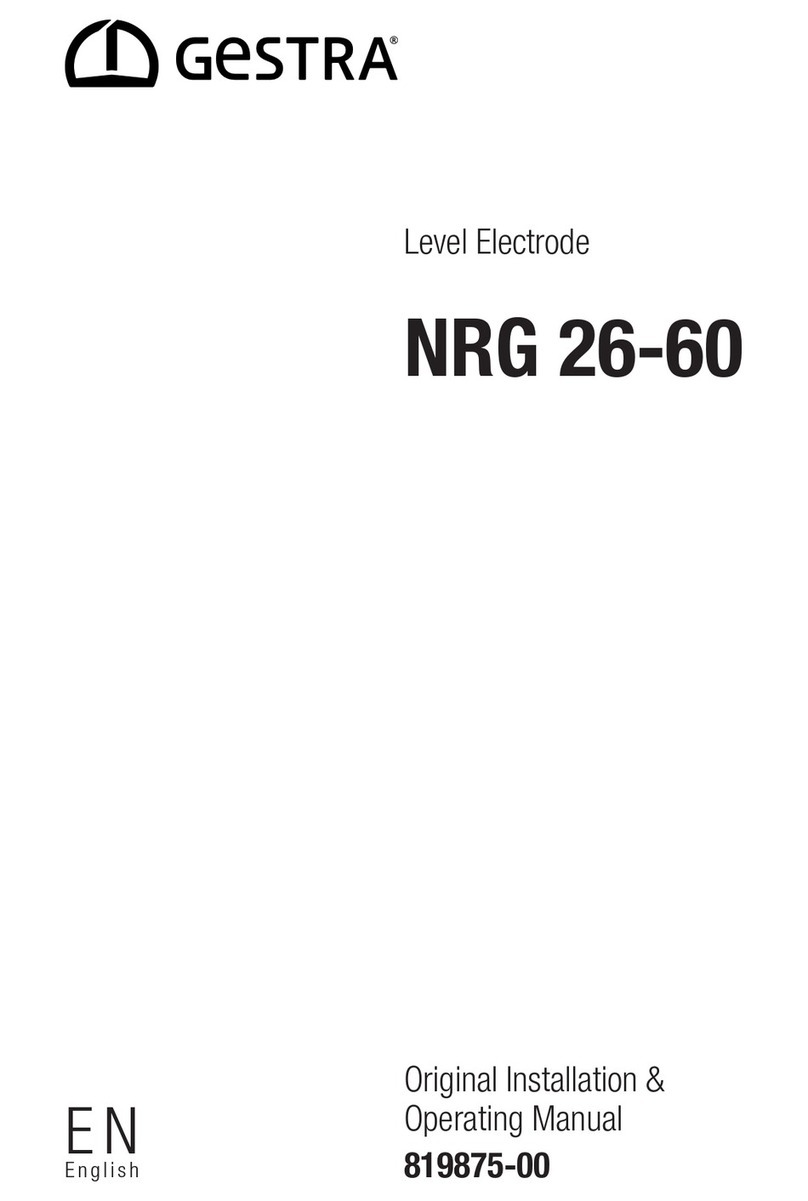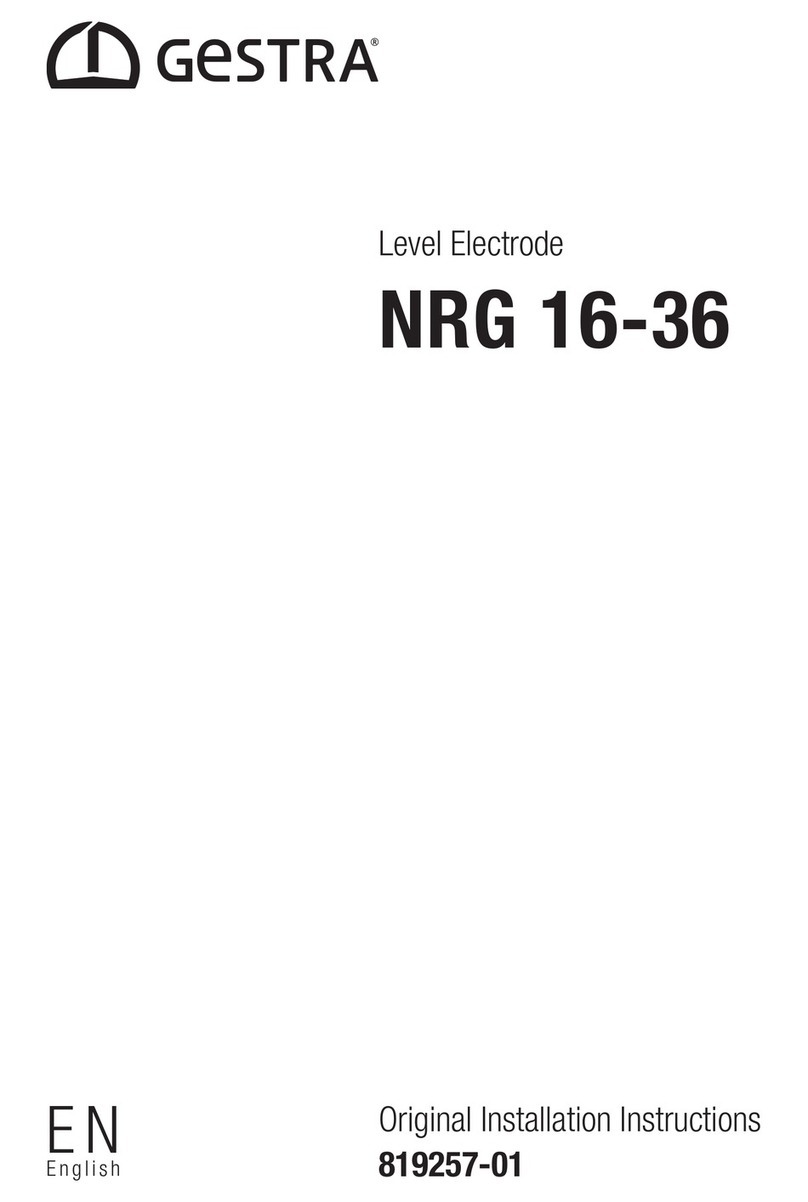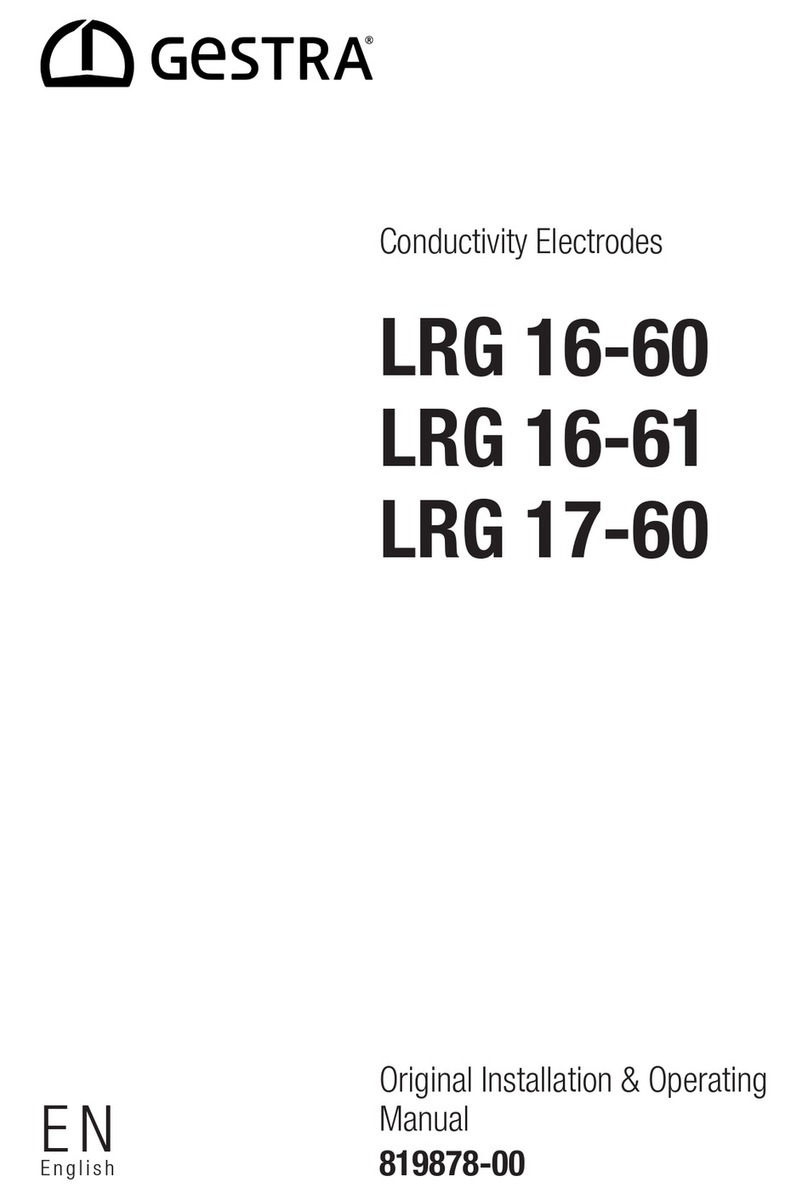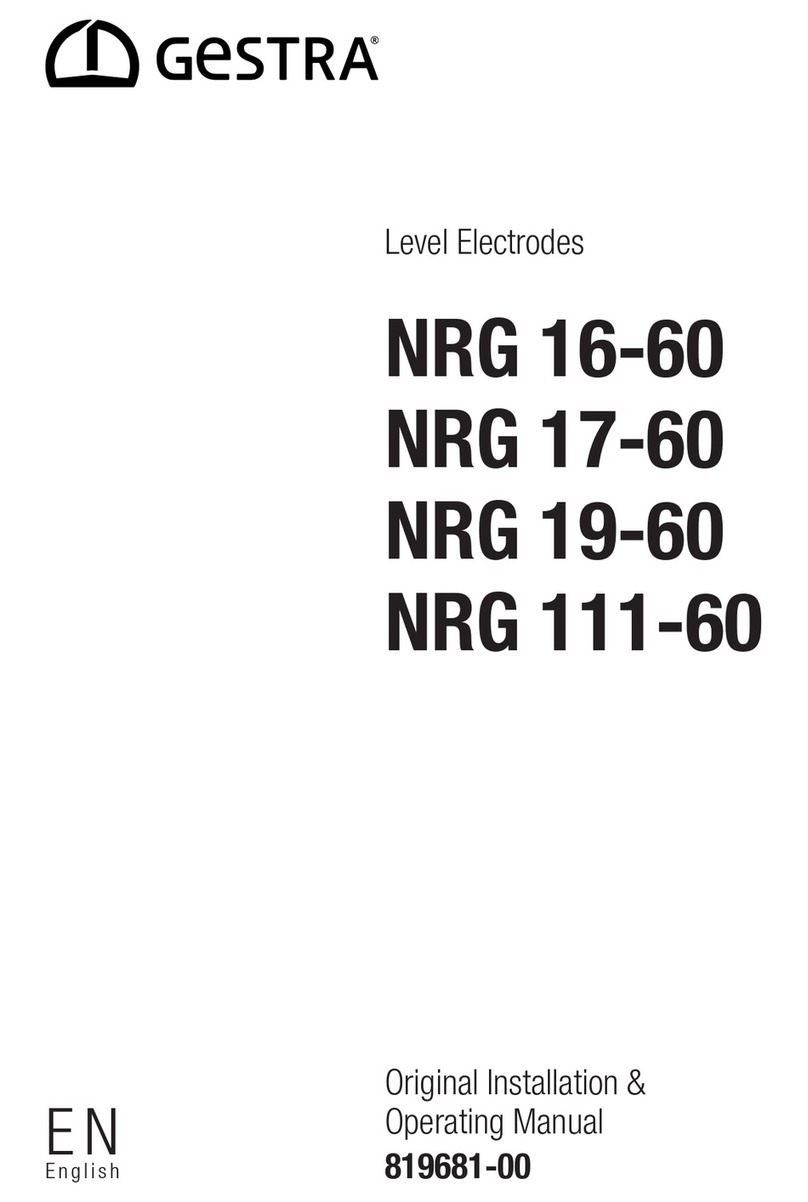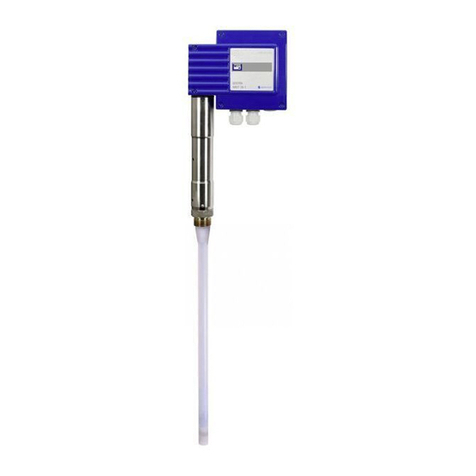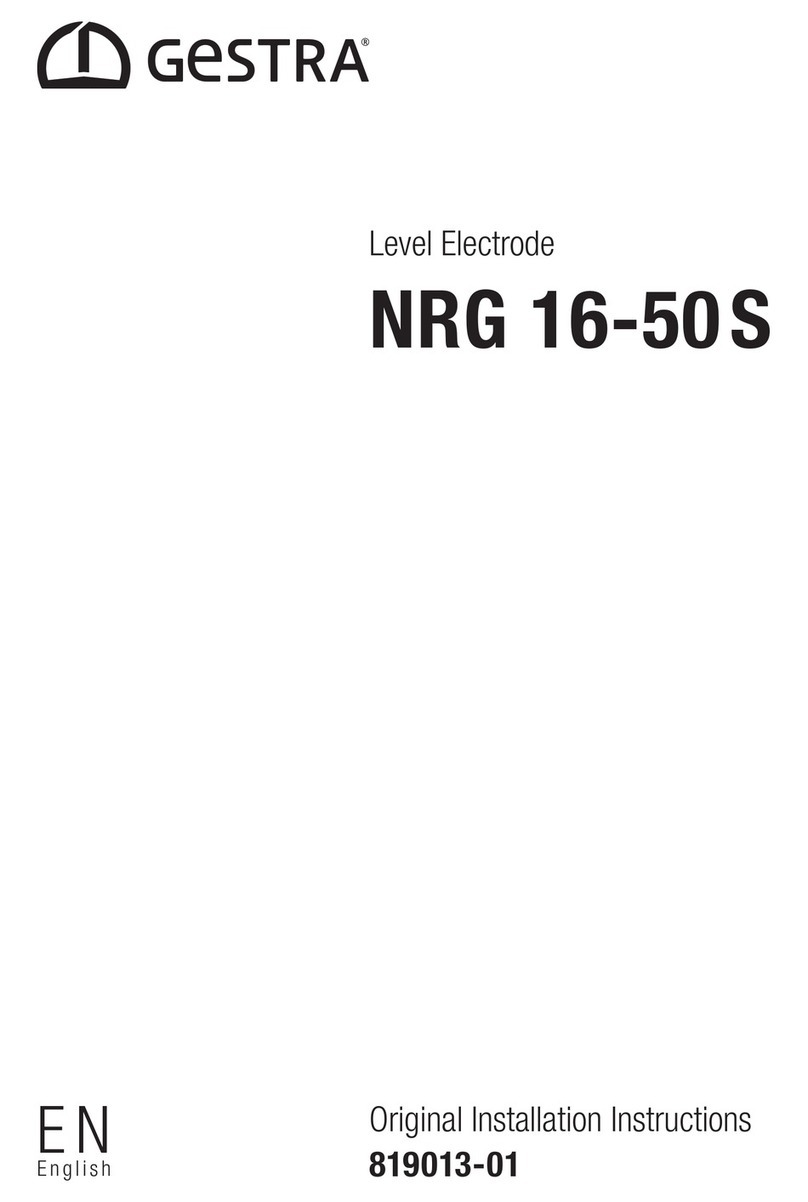4
Important notes
Usage for the intended purpose
The conductivity electrode LRG 16-9 together with the conductivity switch LRS 1-.. or conductivity
controller LRR 1-.. is designed for measuring and monitoring electrical conductivity in conductive
fluids.
If used as conductivity limiter or continuous blowdown controller in steam boilers, the conductivity
electrode LRG 16-9 can be used with the following equipment:
Conductivity switch LRS 1-7
Conductivity switch LRS 1-50
Conductivity controller LRR 1-50
Conductivity controller LRR 1-52
To guarantee a trouble-free operation observe the requirements made on water as specified in the
pertinent TRD and EN regulations.
The equipment must only be used within the admissible pressure and temperature ratings.
Function
The conductivity electrode LRG 16-9 is used in combination with the following equipment as conductivity
limiter and continuous blowdown controller in steam boilers:
Conductivity switch LRS 1-7
Conductivity switch LRS 1-50
Conductivity controller LRR 1-50
Conductivity controller LRR 1-52
In addition the equipment can measure conductivity in condensate and feedwater systems and in cool-
ing and cleaning water.
The conductivity electrode LRG 16-9 in conjunction with conductivity switch LRS 1-7 is also approved
for feedwater monitoring on board of seagoing vessels.
The conductivity electrode works in conjunction with conductivity switches or controllers and monitors
the conductivity in conductive fluids.
To measure the fluid temperature a resistance thermometer Pt 100 is integrated in the electrode.
A short circuit or wire breakage in the conductivity electrode will trigger an error message in the con-
ductivity switch or controller.

